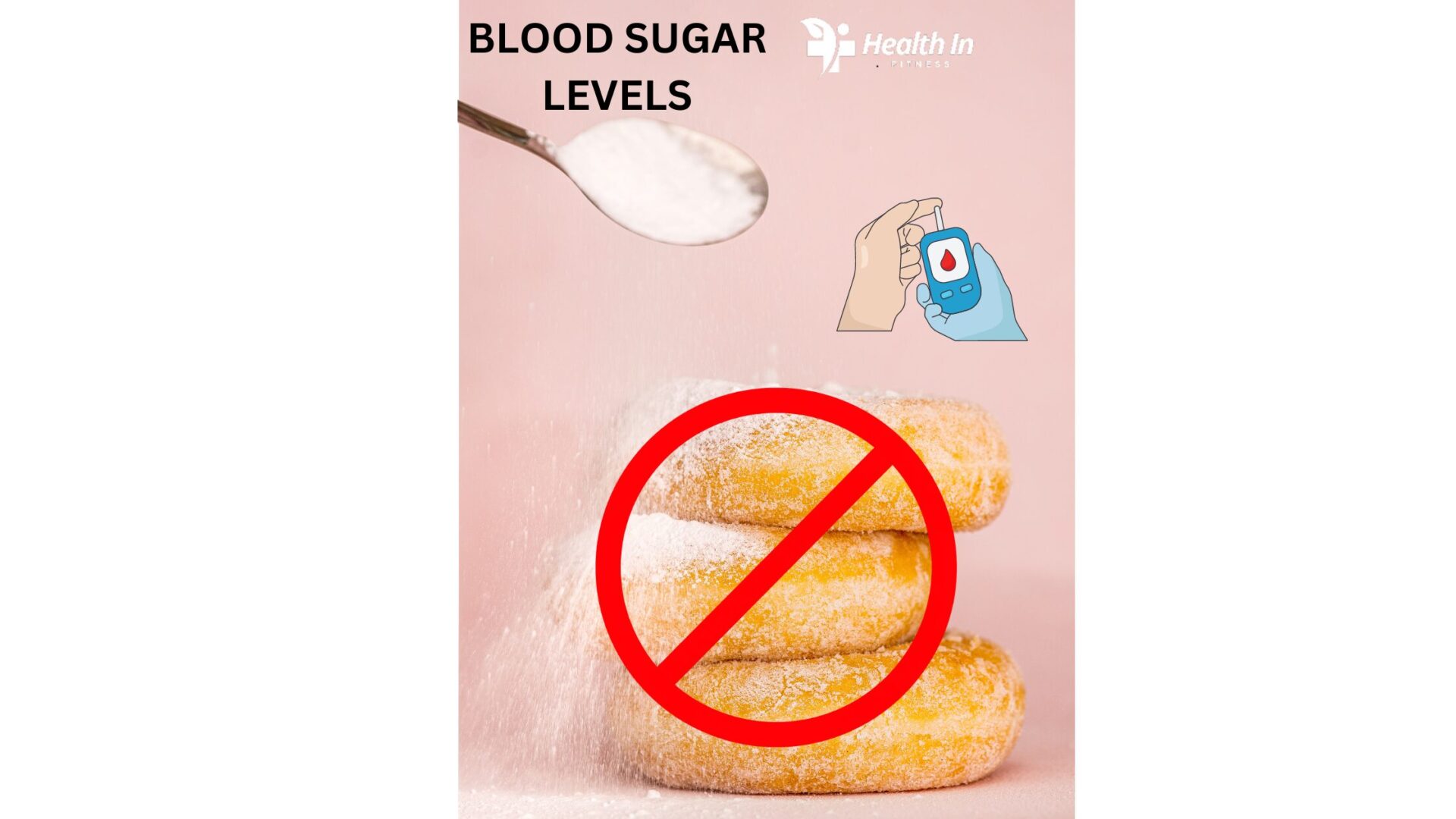Introduction
Maintaining healthy glucose levels is crucial for overall well-being, particularly for individuals with diabetes or those at risk of developing the condition. “ Mastering Glucose control” is a term that refers to the various strategies and practices used to keep blood sugar levels within a normal range. This guide will explore the importance of glucose control, its impact on health, and provide practical tips for achieving and maintaining optimal glucose levels.
Table of Contents:
- Understanding Glucose Control
- Why Is Glucose Control Important?
- Factors Affecting Glucose Levels
- Diet and Nutrition
- Physical Activity
- Stress Management
- Sleep and Glucose Levels
- Medication and Supplements
- Illness and Glucose Levels
- Techniques for Effective Glucose Control
- Monitoring Blood Glucose
- Diet Strategies for Glucose Control
- Exercise and Its Role in Glucose Management
- Stress Reduction Techniques
- Sleep Hygiene for Better Glucose Levels
- The Role of Insulin in Glucose Control
- How Insulin Works
- Insulin Resistance and Its Impact
- Managing Insulin Levels
- The Impact of Glucose Control on Long-Term Health
- Preventing Diabetes Complications
- Cardiovascular Health
- Neuropathy and Kidney Health
- Eye Health and Glucose Levels
- Natural Remedies and Supplements for Glucose Control
- Herbal Supplements
- Dietary Changes
- The Role of Fiber
- Probiotics and Glucose Management
- Understanding Glycemic Index and Load
- What Is the Glycemic Index?
- Glycemic Load: A More Comprehensive Measure
- Using GI and GL for Better Glucose Control
- Common Myths About Glucose Control
- Conclusion: Mastering Glucose Control
1. Understanding Glucose Control: Mastering Glucose Control
Glucose control refers to the management of blood sugar levels within a healthy range to prevent hyperglycemia (high blood sugar) or hypoglycemia (low blood sugar). This involves a combination of lifestyle changes, dietary adjustments, exercise, and sometimes medication. For those with diabetes, maintaining glucose control is critical to avoid complications such as nerve damage, cardiovascular disease, and kidney failure.
2. Why Is Glucose Control Important?
Effective glucose control is vital for everyone, not just those with diabetes. Consistently high blood sugar levels can lead to a condition known as insulin resistance, where the body’s cells become less responsive to insulin, eventually leading to type 2 diabetes. Conversely, low blood sugar levels can cause symptoms like dizziness, confusion, and fainting, and can be dangerous if not managed promptly.
For people with diabetes, glucose control is necessary to: Mastering Glucose Control
- Prevent complications: Long-term high blood sugar can damage blood vessels and nerves, leading to serious complications like heart disease, kidney disease, and blindness.
- Improve quality of life: By managing blood sugar levels, individuals can prevent the symptoms of hyperglycemia and hypoglycemia, which can disrupt daily activities and overall well-being.
- Reduce the risk of emergency situations: Severe hyperglycemia can lead to diabetic ketoacidosis (DKA), while severe hypoglycemia can result in seizures or loss of consciousness. Both conditions require immediate medical attention.
3. Factors Affecting Glucose Levels
Diet and Nutrition
What you eat plays a significant role in glucose control. Carbohydrates, in particular, are the primary macronutrient that impacts blood sugar levels. When you consume carbohydrates, your body breaks them down into glucose, which then enters the bloodstream.
- Simple Carbohydrates: These are quickly digested and can cause rapid spikes in blood sugar. Examples include sugary drinks, white bread, and pastries.
- Complex Carbohydrates: These are digested more slowly, leading to a more gradual increase in blood sugar levels. Whole grains, legumes, and vegetables are good sources of complex carbs.
Fiber: A diet rich in fiber, particularly soluble fiber, can help slow down the absorption of sugar and improve glucose control. Foods like oats, fruits, vegetables, and legumes are excellent sources of fiber.
Protein and Fats: Including healthy proteins and fats in your meals can help stabilize blood sugar levels by slowing the absorption of glucose.
Portion Control: Managing portion sizes is critical, as even healthy foods can cause blood sugar spikes if consumed in large amounts.
Physical Activity
Regular physical activity is one of the most effective ways to improve glucose control. Exercise helps increase insulin sensitivity, allowing your muscles to use glucose more effectively. Both aerobic exercises (like walking, cycling, or swimming) and resistance training (like weight lifting) are beneficial for glucose management.
- Aerobic Exercise: Engages large muscle groups and can lower blood sugar levels during and after the activity.
- Resistance Training: Helps build muscle mass, which can increase glucose uptake and improve overall glucose control.
- Consistency: Regular exercise is key. Even moderate-intensity activities like brisk walking for 30 minutes a day can significantly impact glucose levels.
Stress Management
Stress can have a profound effect on blood sugar levels. When you’re stressed, your body releases stress hormones like cortisol and adrenaline, which can cause blood sugar levels to rise. Chronic stress can lead to prolonged periods of elevated blood sugar and contribute to insulin resistance.
- Mindfulness and Relaxation Techniques: Practices like yoga, meditation, and deep breathing can help reduce stress and improve glucose control.
- Physical Activity: Exercise is also a great stress reliever and can help lower blood sugar levels in response to stress.
- Adequate Sleep: Poor sleep can exacerbate stress and negatively impact glucose control.
Sleep and Glucose Levels
Sleep plays a crucial role in maintaining healthy blood sugar levels. Poor sleep or sleep disorders like sleep apnea can lead to insulin resistance, increased appetite, and higher blood sugar levels. Lack of sleep also affects hormones that regulate hunger, leading to increased cravings for high-carb and sugary foods.
- Sleep Hygiene: Establishing a regular sleep schedule, creating a relaxing bedtime routine, and ensuring a comfortable sleep environment can improve sleep quality and help with glucose control.
- Sleep Duration: Aim for 7-9 hours of sleep per night to support optimal glucose levels.
Medication and Supplements
For individuals with diabetes, medication is often necessary to maintain glucose control. However, certain supplements can also support glucose management.
- Oral Medications: Metformin, sulfonylureas, and DPP-4 inhibitors are common medications prescribed to help control blood sugar.
- Insulin Therapy: Used in type 1 diabetes and some cases of type 2 diabetes, insulin therapy involves regular injections or the use of an insulin pump to regulate blood sugar.
- Supplements: Certain supplements, like chromium, magnesium, and cinnamon, have been studied for their potential to improve glucose control, though they should be used in consultation with a healthcare provider.
Illness and Glucose Levels
When you are ill, your body releases stress hormones to fight the infection, which can also raise blood sugar levels. It’s important to monitor your glucose levels more frequently when you’re sick and adjust your diet, medication, or insulin as needed.
4. Techniques for Effective Glucose Control
Monitoring Blood Glucose
Monitoring your blood sugar levels is crucial for understanding how different foods, activities, and medications affect your glucose levels. It allows you to make informed decisions about your diet, exercise, and medication.
- Fingerstick Testing: The most common method involves using a glucose meter to test a drop of blood from your finger.
- Continuous Glucose Monitoring (CGM): CGM devices provide real-time blood glucose readings throughout the day, offering a more comprehensive view of your glucose levels.
When to Test:
- Fasting: First thing in the morning before eating.
- Before and After Meals: To see how meals affect your glucose levels.
- Before and After Exercise: To monitor the impact of physical activity on your blood sugar.
- Before Bed: To ensure your levels are within a safe range before sleeping.
Diet Strategies for Glucose Control
Diet is the cornerstone of glucose control. Here are some dietary strategies to help manage your blood sugar levels:
- Carbohydrate Counting: Keeping track of the number of carbs you eat can help you manage your blood sugar levels more effectively. Work with a dietitian to determine your daily carb intake and how to distribute it throughout the day.
- Low-Glycemic Foods: Focus on low-glycemic index foods, which have a slower, more stable impact on blood sugar levels. These include whole grains, legumes, and most vegetables.
- Meal Timing: Eating regular meals and snacks throughout the day can prevent blood sugar spikes and crashes.
- Healthy Snacking: Choose snacks that combine protein, fat, and fiber to maintain stable blood sugar levels, such as nuts, seeds, or yogurt with berries.
Exercise and Its Role in Glucose Management
Physical activity can lower blood sugar levels and improve insulin sensitivity. To maximize the benefits:
- Incorporate Different Types of Exercise: Combine aerobic exercises, resistance training, and flexibility exercises for a well-rounded routine.
- Timing of Exercise: Consider the timing of your workouts to avoid low blood sugar. Some people find exercising after meals helps manage blood sugar levels better.
- Stay Hydrated: Dehydration can affect blood sugar levels, so drink plenty of water, especially when exercising.
Stress Reduction Techniques
Chronic stress can negatively impact glucose control. Implementing stress reduction techniques can help:
- Mindfulness Practices: Engage in mindfulness meditation, which has been shown to reduce stress and improve blood sugar control.
- Breathing Exercises: Deep breathing can calm the nervous system and reduce cortisol levels, helping to stabilize blood sugar.
- Physical Activity: Exercise is not only good for glucose control but also effective in managing stress.
Sleep Hygiene for Better Glucose Levels
Improving sleep quality can have a positive impact on glucose control:
- Consistent Sleep Schedule: Go to bed and wake up at the same time each day, even on weekends.
- Sleep Environment: Make your bedroom conducive to sleep by keeping it cool, dark, and quiet.
- Limit Screen Time: Avoid screens for at least an hour before bed to promote better sleep.
5. The Role of Insulin in Glucose Control
How Insulin Works
Insulin is a hormone produced by the pancreas that allows cells to absorb glucose from the bloodstream for energy. When you eat, your pancreas releases insulin to help lower the post-meal spike in blood glucose.
Insulin Resistance and Its Impact
Insulin resistance occurs when cells in your body don’t respond effectively to insulin, causing blood sugar levels to rise. Over time, this can lead to type 2 diabetes. Factors contributing to insulin resistance include obesity, lack of physical activity, and a diet high in refined carbohydrates and sugars.
Managing Insulin Levels
- Diet: Eating a balanced diet low in refined carbs and sugars can improve insulin sensitivity.
- Exercise: Regular physical activity is one of the most effective ways to reduce insulin resistance.
- Weight Management: Losing excess weight can significantly improve insulin sensitivity.
- Medication: In some cases, medication may be necessary to manage insulin levels. Consult with a healthcare provider to determine the best approach.
6. The Impact of Glucose Control on Long-Term Health
Maintaining healthy glucose levels is not just about avoiding diabetes; it has far-reaching effects on overall health.
Preventing Diabetes Complications
Good glucose control can prevent or delay complications associated with diabetes, such as neuropathy, retinopathy, and cardiovascular disease. Regular monitoring, medication adherence, and lifestyle changes are key to managing these risks.
Cardiovascular Health
High blood sugar levels can damage blood vessels and lead to cardiovascular problems, including heart disease and stroke. By mastering glucose control, you can significantly reduce your risk of these conditions.
Neuropathy and Kidney Health
Chronic high blood sugar levels can cause nerve damage (neuropathy) and kidney disease. Proper glucose management can prevent these complications and improve overall quality of life.
Eye Health and Glucose Levels
Diabetic retinopathy is a leading cause of blindness in adults, but it can be prevented with good glucose control. Regular eye exams and blood sugar management are crucial for preserving vision.
7. Natural Remedies and Supplements for Glucose Control
In addition to diet and exercise, certain natural remedies and supplements can support glucose control.
Herbal Supplements
- Cinnamon: May improve insulin sensitivity and lower blood sugar levels.
- Berberine: Found in several plants, berberine has been shown to lower blood sugar levels and improve insulin sensitivity.
- Fenugreek: This herb may help lower blood sugar levels and improve glucose tolerance.
Dietary Changes: Mastering Glucose Control
- Increase Fiber Intake: Fiber slows down the absorption of sugar, helping to stabilize blood sugar levels.
- Add Vinegar to Meals: Consuming vinegar, especially apple cider vinegar, before or with meals may help reduce post-meal blood sugar spikes.
- Incorporate Healthy Fats: Healthy fats, like those found in avocados, nuts, and olive oil, can help manage blood sugar levels.
The Role of Fiber
Fiber plays a crucial role in glucose control by slowing the absorption of sugar and improving insulin sensitivity. Aim for at least 25-30 grams of fiber per day from sources like fruits, vegetables, whole grains, and legumes.
Probiotics and Glucose Management
Gut health is increasingly recognized as a factor in glucose control. Probiotics, found in fermented foods like yogurt, kefir, and sauerkraut, can improve gut health and may help regulate blood sugar levels.
8. Understanding Glycemic Index and Load
What Is the Glycemic Index?
The Glycemic Index (GI) measures how quickly a carbohydrate-containing food raises blood glucose levels. Foods are ranked on a scale of 0 to 100, with higher values indicating faster spikes in blood sugar.
- Low GI Foods (55 or less): These foods cause a slower rise in blood sugar levels, which is beneficial for glucose control.
- High GI Foods (70 or more): These foods cause rapid spikes in blood sugar levels.
Glycemic Load: A More Comprehensive Measure
Glycemic Load (GL) takes into account both the GI and the amount of carbohydrate in a serving of food, providing a more accurate reflection of a food’s impact on blood sugar levels. GL is calculated as follows:
GL=GI×Carbohydrate content (g)÷100\text{GL} = \text{GI} \times \text{Carbohydrate content (g)} \div 100GL=GI×Carbohydrate content (g)÷100
- Low GL (10 or less): Ideal for glucose control.
- High GL (20 or more): Should be consumed in moderation.
Using GI and GL for Better Glucose Control
Incorporate low-GI and low-GL foods into your diet to help maintain stable blood sugar levels. This includes foods like oats, legumes, non-starchy vegetables, and most fruits. Combining high-GI foods with protein, fiber, or fat can also help lower their impact on blood sugar.
9. Common Myths About Glucose Control
There are many misconceptions about glucose control that can lead to confusion or poor management strategies. Let’s debunk some of these myths:
- Myth 1: Only people with diabetes need to worry about glucose control.
- Truth: Glucose control is important for everyone, as it helps prevent insulin resistance and reduces the risk of developing type 2 diabetes.
- Myth 2: All carbohydrates are bad for glucose control.
- Truth: Not all carbs are created equal. Complex carbohydrates and high-fiber foods are beneficial for glucose control, while simple sugars should be limited.
- Myth 3: You can control your blood sugar with diet alone.
- Truth: While diet plays a significant role, exercise, stress management, sleep, and sometimes medication are also crucial components of glucose control.
- Myth 4: Fruit is bad for glucose control because it’s high in sugar.
- Truth: Most fruits have a low to moderate GI and are packed with fiber, vitamins, and minerals that support overall health and glucose control.
10. Conclusion
Glucose control is a vital aspect of health management, not just for individuals with diabetes, but for everyone. By understanding the factors that influence blood sugar levels and implementing strategies like a balanced diet, regular exercise, stress management, and proper sleep, you can maintain healthy glucose levels and reduce the risk of long-term health complications.
Whether you are managing diabetes or aiming to prevent it, focusing on glucose control is essential for maintaining optimal health and well-being. By staying informed, monitoring your blood sugar levels, and making informed lifestyle choices, you can achieve better glucose control and enjoy a healthier, more active life, helping you with Mastering Glucose Control.
This extensive guide provides a wealth of information on Mastering glucose control, offering actionable tips and insights to help you manage and maintain healthy blood sugar levels. If you have specific health concerns or conditions, it’s important to consult with a healthcare provider to tailor a glucose control plan that meets your unique needs.


